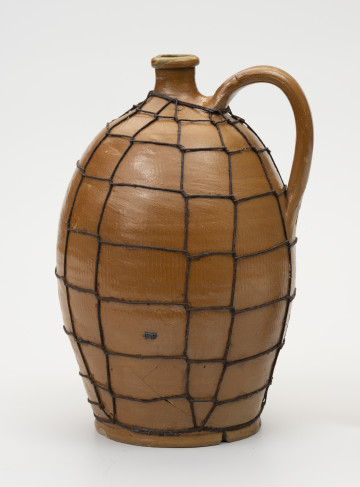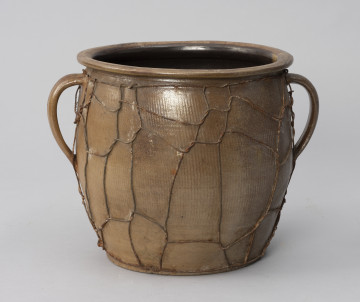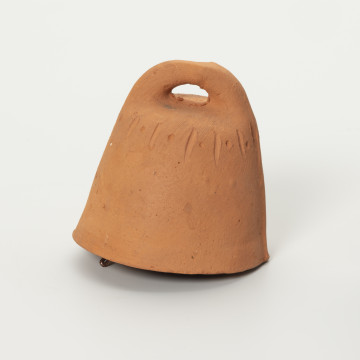
Bottle repaired with wire mesh
1850 — 1900
National Museum in Szczecin
Part of the collection: Pyrzycka folk culture
Depending on the raw material, shape, firing method, glazes, and various decorations, ceramics can be a simple utilitarian item or a beautiful and expensive object of the highest artistry. In rural conditions, basic pottery skills were mainly used. Solid and not necessarily decorated vessels were produced in numerous workshops. One of the characteristic and widespread ceramic products in rural conditions were jugs. Their size and shape had different proportions depending on the tradition of the region and the potter's fantasy. The cheapest were vessels only fired (the so-called biscuits); the most expensive ones were glazed on both sides and decorated with patterns. Between these products, there is also black pottery, called 'siwaki' [greys], in Polish tradition. 'Grey' pottery is very often jugs ranging in colour from black, when the wood used for firing is tarry, to dark grey with a silvery sheen, when deciduous wood such as alder or apple is added towards the end of the firing. These are fired reductively, i.e., without air in the final stage of the process. Modern aesthetics like muted, solid colours, including black and graphite with a slightly silvery surface, but 'siwaki' were highly prized in the past. They were bought only by those who could not afford the more expensive 'glazed' pots.
Iwona Karwowska
Author / creator
Dimensions
cały obiekt: height: 18 cm
Creation time / dating
Creation / finding place
Identification number
Location / status

1850 — 1900
National Museum in Szczecin

1890 — 1910
National Museum in Szczecin

1951 — 1999
National Museum in Szczecin
DISCOVER this TOPIC
National Museum in Lublin
DISCOVER this PATH
Educational path